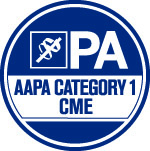WMJ Vol 122 Issue 5: The Burden of Neonatal Abstinence Syndrome, Opioids, and COVID-19 in Wisconsin
ABSTRACT
Introduction: Wisconsin experienced overlapping and accelerating epidemics of opioid use and COVID-19 after March 2020. We hypothesized that Wisconsin neonatal abstinence syndrome rates increased after March 2020 alongside other markers of opioid burden.
Methods: Retrospective cohort analysis examined deidentified Wisconsin census, birth certificate, death certificate, hospital discharge, Prescription Drug Monitoring Program, emergency medical service run, and COVID-19 diagnosis records spanning January 1, 2019, through December 31, 2021. January 2019 through March 2020 was considered before the onset of COVID-19 (pre); April 2020 through December 2021 was considered post-onset of COVID-19 (post). Wisconsin Department of Health Services guidelines defined 5 Wisconsin regions. Rates pre- to post-onset were compared with P values < 0.05 considered statistically significant.
Results: From January 2019 through December 2021, 190 072 infants were born in Wisconsin, of which 1205 were diagnosed with neonatal abstinence syndrome. Statewide opioid-associated deaths, emergency medical service runs, and emergency department visits all increased from the pre- to post-onset periods. Per-person Prescription Drug Monitoring Program rates decreased in both the total population and childbearing-age females (15-44 years), and statewide deaths in childbearing-age females increased significantly (P < 0.001). Statewide monthly neonatal abstinence syndrome incidence rates did not change significantly (6.68/1000 births to 6.10/1000 births; P = 0.16) but decreased significantly in the most populous Southeastern Region (8.13/1000 births to 6.37/1000 births; P = 0.02) of the state.
Conclusions: Opioid-associated morbidity and mortality increased in Wisconsin during the study period, including among females age 15 to 44 years. Despite increased opioid burden, neonatal abstinence syndrome incidence decreased in the Southeastern Region. Ongoing neonatal abstinence syndrome and opioid analysis may benefit from region-based contextualization.
Intended Audience
The target audience for this journal-based activity is healthcare providers caring for the people and communities of Wisconsin and beyond.
Learning Objectives
As a result of this journal-based activity, learners, as members of the healthcare team, will be able to:
- Describe changes in multiple markers of the burden of the opioid epidemic, after the onset of the COVID-19 pandemic, reported in the article.
- Explain the study findings pertaining to the neonatal abstinence syndrome incidence rates in Wisconsin.
- Discuss how learner’s practice and their healthcare team’s experience relate to the study findings.
FACULTY DISCLOSURE
It is the policy of the University of Wisconsin–Madison Interprofessional Continuing Education Partnership (ICEP) to identify, mitigate and disclose all relevant financial relationships with ineligible companies* held by the speakers/presenters, authors, planners, and other persons who may influence the content of this accredited continuing education (CE). In addition, speakers, presenters and authors must disclose any planned discussion of unlabeled/unapproved uses of drugs or devices during their presentation.
For this accredited continuing education activity all relevant financial relationships have been mitigated and detailed disclosures are listed below.
| Name of Individual | Individual's Role in Activity | Financial Relationship Disclosure | Discussion of |
| Peter Johnson MD, MS | Author | No relevant relationships with ineligible companies to disclose | No |
| Erwin Cabacungan, MD | Author | No relevant relationships with ineligible companies to disclose | No |
| Mahua Dasgupta, MS | Author | No relevant relationships with ineligible companies to disclose | No |
| Ke Yan, PhD | Author | No relevant relationships with ineligible companies to disclose | No |
| Jennifer Broad, MPH | Author | No relevant relationships with ineligible companies to disclose | No |
| Madeline Kemp, MPH | Author | No relevant relationships with ineligible companies to disclose | No |
| Kelsey Ryan, MD | Author | No relevant relationships with ineligible companies to disclose | No |
| David Mallinson, PhD | Reviewer | No relevant relationships with ineligible companies to disclose | No |
| Brian Hilgeman, MD | Reviewer | No relevant relationships with ineligible companies to disclose | No |
| Paul Creswell, PhD | Reviewer | No relevant relationships with ineligible companies to disclose | No |
| Fahad Aziz, MD | Editor | No relevant relationships with ineligible companies to disclose | No |
| Kevin Wyne, PA-C, MPAS, MSc | Reviewer | No relevant relationships with ineligible companies to disclose | No |
| David Dwyer, PhD, RN, NE-BC. | Reviewer | No relevant relationships with ineligible companies to disclose | No |
| Jennifer Esch, PharmD, MBA, BCPS | Reviewer | No relevant relationships with ineligible companies to disclose | No |
| Shezad Baloch, MA | Accreditation Specialist | No relevant relationships with ineligible companies to disclose | No |
*Ineligible companies are those whose primary business is producing, marketing, selling, re-selling, or distributing healthcare products used by or on, patients.
The ACCME does not consider providers of clinical services directly to patients to be ineligible companies.
Accreditation
Accreditation Statement
 | In support of improving patient care, this activity has been planned and implemented by the University of Wisconsin–Madison ICEP and the Wisconsin Medical Journal. The University of Wisconsin–Madison ICEP is jointly accredited by the Accreditation Council for Continuing Medical Education (ACCME), the Accreditation Council for Pharmacy Education (ACPE), and the American Nurses Credentialing Center (ANCC), to provide continuing education for the healthcare team. |
Credit Designation Statements
American Medical Association (AMA)
The University of Wisconsin–Madison ICEP designates this journal-based CE activity for a maximum of 1.0 AMA PRA Category 1 Credit™. Physicians should claim only the credit commensurate with the extent of their participation in the activity.
American Nurses Credentialing Center (ANCC)
The University of Wisconsin–Madison ICEP designates this journal-based CE activity for a maximum of 1.0 ANCC contact hours.
Accreditation Council for Pharmacy Education (ACPE)
The University of Wisconsin–Madison ICEP designates this knowledge-based activity for a maximum of 1.0 hours or 0.1 CEUs of CPE credit. Credit can be earned by successfully completing the activity. Credit will be provided to NABP CPE Monitor within 60 days after the activity completion.
2024 Universal Activity Number (UAN): JA0000358-9999-24-065-H99-P
 | The University of Wisconsin–Madison ICEP has been authorized by the American Academy of PAs (AAPA) to award AAPA Category 1 CME credit for activities planned in accordance with AAPA CME Criteria. This activity is designated for 1 AAPA Category 1 CME credit. Approval is valid until 08/02/2024. PAs should only claim credit commensurate with the extent of their participation. |
Continuing Education Units
The University of Wisconsin–Madison ICEP, as a member of the University Professional & Continuing Education Association (UPCEA), authorizes this program for 0.1 continuing education units (CEUs) or 1 hour.
Available Credit
- 1.00 AAPA Category 1 CME
- 1.00 ACPE Contact Hours - Pharmacist
- 1.00 AMA PRA Category 1 Credit™
- 1.00 ANCC Contact Hours
- 1.00 University of Wisconsin–Madison Continuing Education Hours
- 1.00 Approved for AMA PRA Category 1 Credit™
Registration for this activity can only be completed through the ICEP Learning Portal. Attendee registrations made through any other sites cannot be honored. UW-Madison ICEP is not able to refund fees paid through unaffiliated registration sites, such as eMedEvents.com, MedConfWorld.com, EventEgg.com, and 10times.com. Please report any unauthorized websites or solicitations for registrations to [email protected].
Accessibility
If you need anything to participate in this program, please contact [email protected].
Required Hardware/software
Free, current version of Chrome, Firefox, Safari, or Edge. Some older browsers and Microsoft Internet Explorer could produce error messages or not display the content correctly.
Free, current version of Adobe Acrobat Reader or other .pdf reader.

 Facebook
Facebook X
X LinkedIn
LinkedIn Forward
Forward